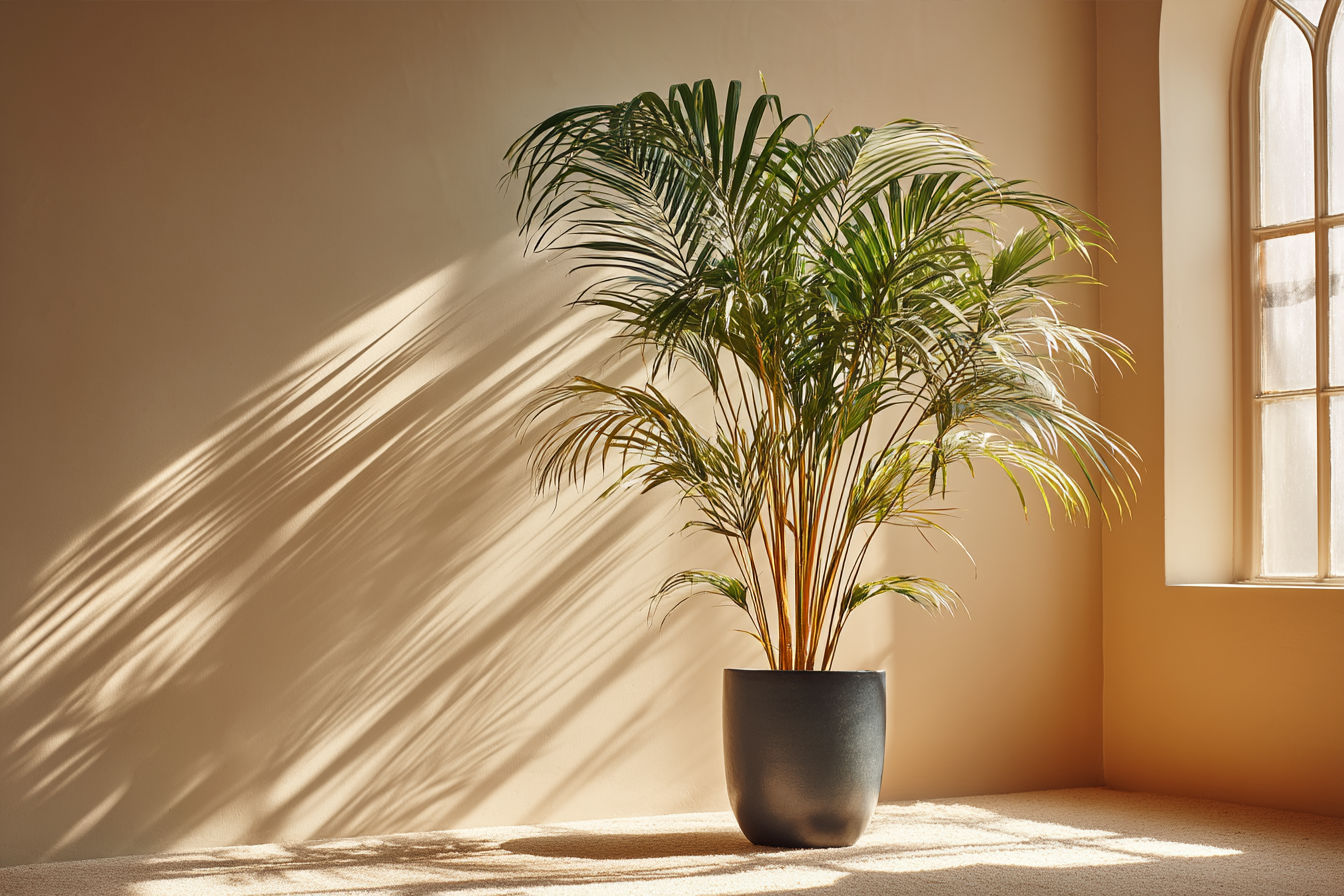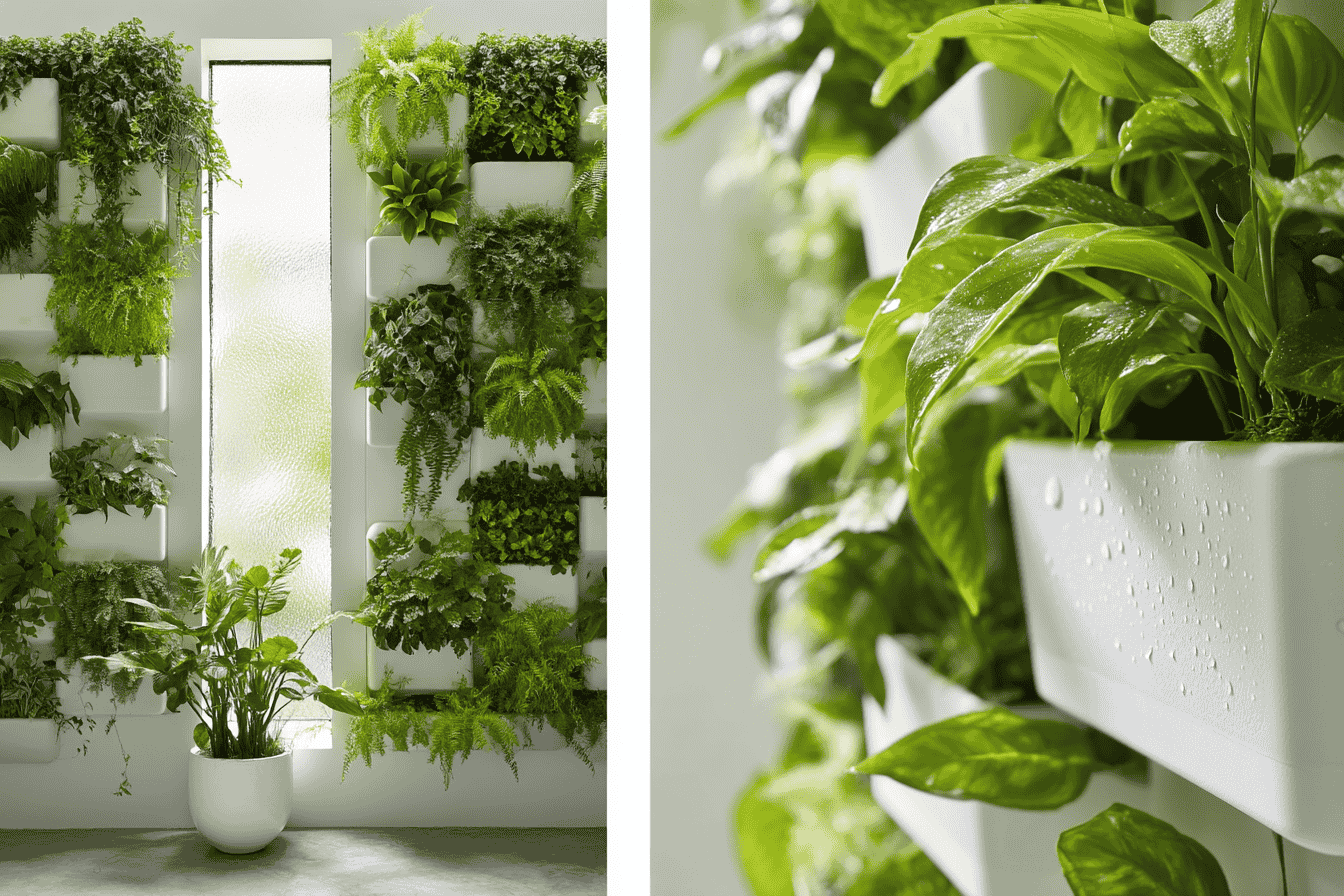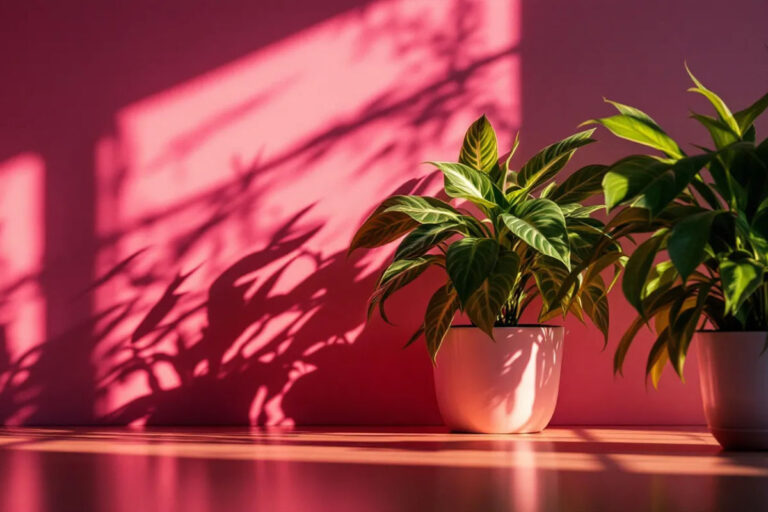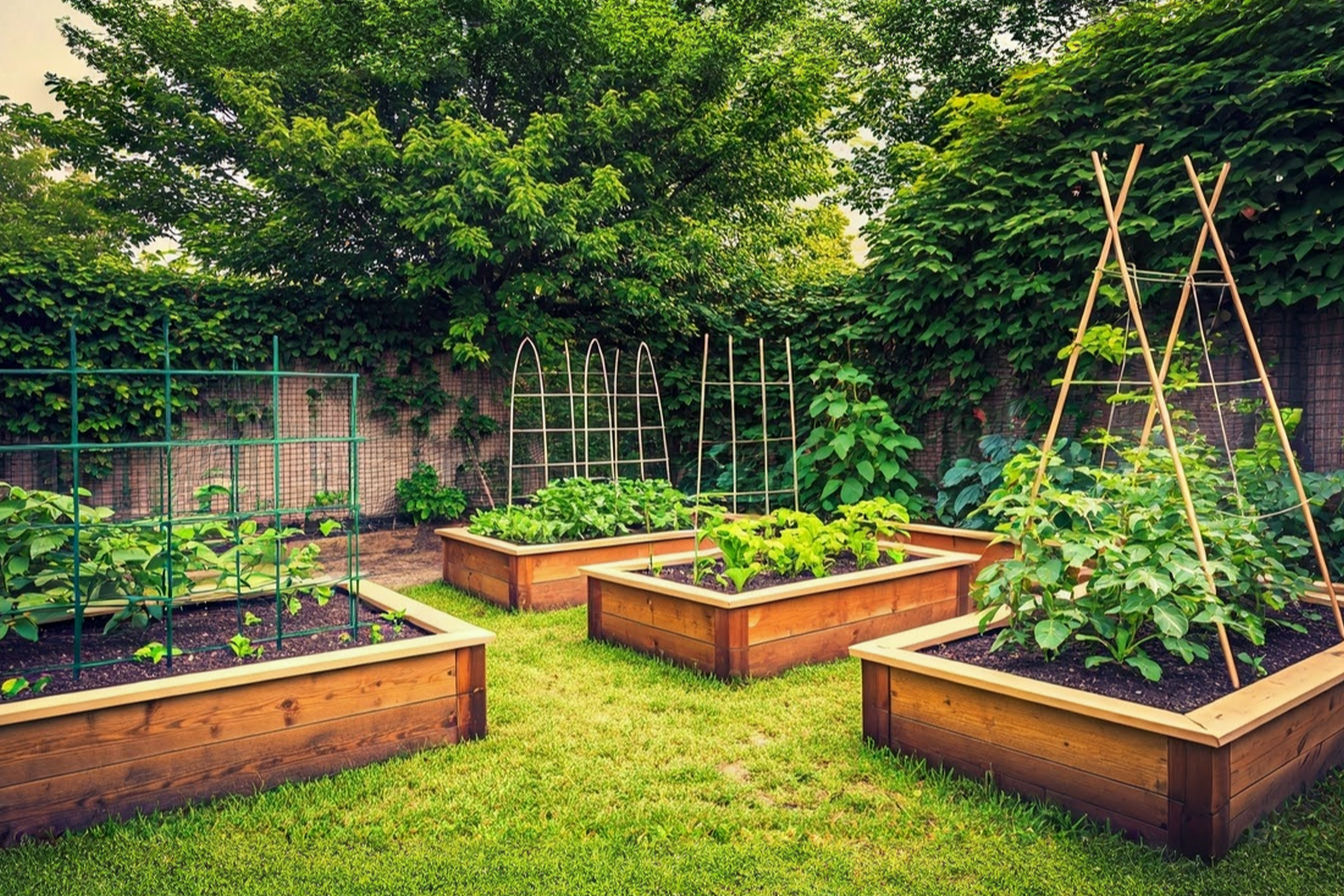This post may contain affiliate links. If you make a purchase through these links, we may earn a commission at no additional cost to you.
There’s something deeply satisfying about plucking a fresh, fragrant lemon from your very own tree—especially when that tree thrives inside your home during any season. While growing citrus indoors presents unique challenges, the reward of harvesting homegrown lemons year-round makes the effort worthwhile. This comprehensive guide will walk you through every aspect of indoor lemon tree cultivation, from selecting the right varieties to celebrating your first successful harvest.
Indoor lemon trees create a beautiful focal point in any room while providing fresh fruit, delightful fragrance, and visual appeal throughout the year. With proper care and attention to their specific needs, your potted citrus can become both a decorative element and a productive member of your indoor garden. Let’s explore how to create citrus success in your home.
Choosing the Right Lemon Varieties for Indoor Success
Not all lemon trees are created equal when it comes to indoor growing. Selecting the right variety forms the foundation of your citrus success story.
Dwarf Varieties: The Indoor Champions
For indoor cultivation, dwarf citrus varieties reign supreme. These compact trees have been specifically bred or grafted to maintain a manageable size while still producing full-sized fruit. Their naturally smaller stature makes them perfect for container growing without sacrificing productivity.
Meyer lemons stand out as the quintessential choice for indoor growers. These popular citrus trees aren’t true lemons but rather a lemon-mandarin hybrid, offering sweeter, less acidic fruit with thin, fragrant skin. Their compact growth habit, adaptability to container life, and reliable fruiting make Meyer lemons the gold standard for indoor citrus cultivation.
Other excellent dwarf varieties that perform well indoors include:
Improved Dwarf Meyer – An even more compact version of the classic Meyer, perfect for smaller spaces.
Eureka Lemon – Produces true lemons with the classic tart flavor, available in dwarf forms that adapt well to containers.
Ponderosa Lemon – Creates enormous fruit (resembling grapefruit in size) on a relatively compact tree, though it requires slightly more space than other dwarf varieties.
Variegated Pink Lemon – Offers beautiful green and white striped leaves with pink-fleshed fruit, adding ornamental value alongside productivity.
Dwarf Lisbon Lemon – Provides traditional tart lemons on a thornless plant, making it easier to manage indoors.
Sourcing Quality Trees
The journey to citrus success begins with sourcing high-quality trees. Whenever possible, purchase from reputable nurseries that specialize in citrus, either locally or through established online vendors. Look for trees that are:
- Already grafted onto dwarf rootstock
- At least 2-3 years old for earlier fruiting
- Free from pests and diseases
- Grown specifically for container cultivation
Avoid impulse purchases from general retailers where citrus trees may have received inadequate care. A healthy starting specimen dramatically increases your chances of long-term success.
Creating the Perfect Growing Environment
Indoor citrus trees require specific environmental conditions to thrive and produce fruit. Replicating these conditions as closely as possible in your home creates the foundation for success.
Light Requirements: The Critical Factor
Sufficient light ranks as the most crucial factor for indoor lemon tree fruiting. These sun-loving plants need significantly more light than typical houseplants. For fruit production, provide:
At minimum 6-8 hours of direct sunlight daily through a south-facing window. East or west-facing windows provide the second-best option, while north-facing windows rarely supply adequate light for fruiting.
When natural light falls short, supplement with full-spectrum grow lights positioned 12-18 inches from the canopy and operated for 10-12 hours daily. Combining natural and artificial light often creates the ideal solution, especially during shorter winter days when fruiting depends on consistent light levels.
Pay attention to your tree’s response to light. Leaf yellowing, stretched growth, or leaf drop often indicates insufficient light, while crisp, dark green leaves signal appropriate light levels.
Temperature Considerations
Indoor lemon trees prefer temperatures between 65-70°F (18-21°C) during the day and slightly cooler temperatures around 55-65°F (13-18°C) at night. This temperature differential helps stimulate flowering and fruit production.
Avoid placing your citrus near heating vents, radiators, or air conditioning units where they might experience temperature extremes or hot, dry air. Similarly, keep them away from drafty windows during winter months, as cold drafts can shock the plant and cause leaf drop.
Most indoor environments naturally provide suitable temperatures, but remain vigilant about these temperature ranges during extreme weather seasons when heating or cooling systems might create challenging conditions.
Humidity Needs and Solutions
Indoor environments, particularly in winter when heating systems operate, typically offer significantly less humidity than citrus trees prefer. While adapting somewhat to lower humidity, your lemon tree will thrive with 50% or higher relative humidity.
Implement these strategies to increase humidity:
- Group your citrus with other plants to create a microclimate with higher humidity
- Place the container on a humidity tray filled with pebbles and water
- Use a room humidifier near your tree, especially during winter
- Mist the foliage occasionally, though this provides only temporary relief
Proper humidity levels prevent issues like leaf curl, brown leaf tips, and flower drop that commonly plague indoor citrus in dry environments.
Air Circulation Matters
While craving humidity, lemon trees simultaneously need good air circulation to prevent fungal issues and promote pollination. Position a small fan nearby to create gentle, consistent air movement without generating cold drafts. This circulation helps strengthen the stem, distribute humidity evenly, and reduces the risk of pests like spider mites that thrive in stagnant conditions.
Container Selection and Soil Fundamentals
The container and soil you choose create the foundation of your indoor citrus system. Getting these elements right from the beginning prevents many common problems.
Selecting the Ideal Container
Choose containers that provide:
Excellent drainage through multiple drainage holes. This non-negotiable feature prevents root rot, the primary killer of container citrus.
Appropriate sizing that allows for growth without overwhelming the plant. Start with a pot 2-4 inches larger than the nursery container, then gradually increase size during repotting sessions. A mature indoor lemon tree typically thrives in a 10-15 gallon container.
Suitable materials that balance moisture retention with breathability. Terracotta and ceramic pots naturally wick moisture away from the soil, helping prevent overwatering, while plastic containers retain moisture longer and weigh less. Each has advantages depending on your watering habits and environment.
Sufficient weight and stability to support a top-heavy, fruit-laden tree. Wide-bottomed containers prevent tipping as your tree grows.
Always include a saucer or tray to catch water runoff, but never allow your tree to sit in standing water.
Soil Requirements for Container Citrus
Lemon trees demand soil with specific characteristics:
Superior drainage through a porous, well-aerated mix. Standard potting soil typically retains too much moisture for citrus.
Proper pH range between 5.5 and 6.5, slightly acidic for optimal nutrient uptake.
Adequate fertility with balanced nutrients and organic matter.
Commercial citrus potting mixes offer convenience and appropriate composition. Alternatively, create your own mix with:
- 1 part high-quality potting soil
- 1 part coconut coir or peat moss
- 1 part perlite or pumice
- 1 part compost or worm castings
- A handful of expanded clay pellets for additional drainage
This mixture provides the drainage, aeration, and nutrient balance that container citrus trees need to develop healthy root systems and support fruit production.
Essential Watering Techniques
Mastering watering represents perhaps the most challenging aspect of indoor citrus care. Both overwatering and underwatering create stress that impacts flowering and fruiting.
Finding the Right Balance
The golden rule for watering indoor citrus: water thoroughly but infrequently. Allow the top 2-3 inches of soil to dry out between waterings, then provide enough water to thoroughly saturate the root ball and flow from the drainage holes.
This approach encourages deeper root development and prevents the constantly wet conditions that lead to root rot. For most indoor environments, this translates to watering once every 7-10 days, though you should always check soil moisture rather than adhering to a strict schedule.
The finger test provides a reliable method for checking moisture levels. Insert your finger 2-3 inches into the soil—if it feels dry at that depth, water thoroughly. If it still feels moist, wait a few more days.
Seasonal Adjustments
Your lemon tree’s water needs fluctuate throughout the year:
During active growth in spring and summer, water needs increase substantially.
In fall and winter, as growth slows and daylight decreases, reduce watering frequency while still thoroughly saturating when you do water.
Flowering and fruiting periods demand consistent moisture to prevent blossom or fruit drop, so monitor closely during these critical phases.
Water Quality Considerations
Citrus trees show sensitivity to water quality issues. When possible, use:
Room temperature water to avoid shocking the roots
Filtered or collected rainwater to avoid chlorine, fluoride, and other chemicals in tap water
If using tap water, allow it to sit for 24 hours before application to allow chlorine to dissipate
Add a tablespoon of white vinegar to your watering can occasionally to help maintain the slightly acidic soil conditions that citrus prefer.
Fertilization Strategies for Indoor Fruit Production
Indoor lemon trees rely entirely on you for their nutrition. Without access to weathering minerals and natural soil processes, container citrus needs regular fertilization to produce healthy fruit.
Understanding Citrus Nutrition
Citrus trees qualify as heavy feeders with specific nutrient requirements:
Nitrogen (N) supports leafy growth and overall tree vigor
Phosphorus (P) encourages strong root development and flowering
Potassium (K) promotes fruit development and disease resistance
Magnesium, iron, zinc, manganese and other micronutrients prevent common deficiencies that plague indoor citrus
Look for fertilizers specifically formulated for citrus with ratios like 2-1-1 or 3-1-2, indicating higher nitrogen content with balanced phosphorus and potassium.
Application Timing and Methods
During the active growing season (spring through early fall), fertilize your indoor lemon tree every 4-6 weeks with a citrus-specific fertilizer, following package directions for container plants.
Reduce feeding to every 8-10 weeks during late fall and winter when growth naturally slows.
Always apply fertilizer to moist soil to prevent root burn, and water thoroughly after application to distribute nutrients throughout the root zone.
Alternate between organic options (fish emulsion, seaweed extract) and slow-release granular fertilizers for balanced nutrition. Organic options provide immediate nutrients, while slow-release formulations offer steady nourishment over time.
Recognizing Nutrient Deficiencies
Common deficiency symptoms in indoor citrus include:
Yellowing leaves with green veins (iron or manganese deficiency)
Mottled yellowing of leaves (zinc deficiency)
Yellow leaves with dark green veins (magnesium deficiency)
Pale new growth (nitrogen deficiency)
Poor flowering or fruit development (phosphorus or potassium deficiency)
Address deficiencies promptly with appropriate supplementation. Foliar sprays offer quick absorption for micronutrient deficiencies, while soil amendments provide longer-term correction.
Pruning and Training for Maximum Fruit
Strategic pruning helps balance vegetative growth with fruit production while maintaining a size appropriate for indoor cultivation.
Structural Pruning Basics
Establish a strong framework through selective pruning:
Maintain a central leader with several well-spaced main branches
Remove crossing, damaged, or inward-growing branches
Thin dense growth to improve light penetration and air circulation throughout the canopy
Limit height by pruning the central leader when the tree reaches your desired size
For most indoor settings, maintain a height of 4-6 feet to allow easy management and harvesting while ensuring sufficient foliage for photosynthesis.
Timing Your Pruning Activities
Schedule major pruning for late winter or early spring before the active growth period begins. This timing allows the tree to heal quickly and direct energy to new growth.
Avoid heavy pruning during flowering or fruiting periods, as this stresses the tree and reduces harvest potential.
Throughout the year, perform light maintenance pruning to remove damaged growth, water sprouts (vigorous upright shoots), and suckers from the base.
Tools and Techniques
Use sharp, clean pruning shears to make precise cuts just above a leaf node or branch junction.
Sterilize tools before and after pruning using alcohol or a 10% bleach solution to prevent disease transmission.
Apply pruning sealer to larger cuts on indoor trees to prevent moisture loss and potential disease entry.
Pollination Techniques for Indoor Settings
Without natural pollinators or wind to transfer pollen within flowers, indoor citrus often requires human assistance to ensure fruit development.
Understanding Citrus Flowers
Most lemon varieties produce perfect flowers containing both male and female parts, making them technically self-pollinating. However, without natural movement to distribute pollen, indoor trees benefit from manual pollination assistance.
Citrus typically flowers in cycles throughout the year, with the heaviest bloom occurring in early spring. Each flower has multiple stamens (male parts) surrounding a central pistil (female part). Successful pollination occurs when pollen transfers from stamens to pistil.
Manual Pollination Methods
When your lemon tree flowers, use one of these effective pollination techniques:
Electric toothbrush method: Gently touch the electric toothbrush to the flower stem (not the flower itself) to create vibration that releases pollen.
Artist’s paintbrush technique: Use a small, soft paintbrush to collect pollen from multiple flowers and transfer it to receptive stigmas.
Cotton swab approach: Lightly touch a cotton swab to the center of each open flower, moving from flower to flower to distribute pollen.
For best results, pollinate during mid-morning when humidity levels typically favor pollen viability and transfer.
Improving Fruit Set
Maximize pollination success by:
Creating air movement with a small fan to help distribute pollen naturally
Maintaining proper humidity levels as overly dry air causes pollen to become non-viable
Ensuring adequate nutrition, particularly phosphorus, which supports flower development
Moving potted trees outdoors temporarily during flowering periods when weather permits, allowing natural pollinators to assist
Expect only about 10-30% of flowers to develop into fruit even with excellent pollination, as trees naturally shed excess flowers they cannot support.
Pest and Disease Management
Indoor environments generally offer some protection from pests and diseases, but constant vigilance remains necessary for citrus success.
Common Indoor Citrus Pests
Spider mites thrive in dry indoor conditions, causing stippled, yellowing leaves and fine webbing. Combat them by increasing humidity, spraying leaves with water, and applying insecticidal soap or neem oil for serious infestations.
Scale insects appear as small bumps on stems and leaf undersides, sucking plant juices and secreting honeydew. Remove minor infestations with rubbing alcohol on a cotton swab, or treat more severe cases with horticultural oil.
Aphids cluster on new growth and flower buds, distorting development and spreading disease. Wash them away with a strong spray of water or apply insecticidal soap to affected areas.
Mealybugs resemble small cottony masses in leaf axils and on stems. Treat with rubbing alcohol applied directly to the insects or neem oil for larger outbreaks.
Fungus gnats emerge from consistently wet soil, indicating overwatering. Allow soil to dry appropriately between waterings and consider adding a layer of sand to the soil surface to deter egg-laying.
Disease Prevention Strategies
Prevent common citrus diseases through these proactive measures:
Root rot prevention: Ensure excellent drainage and avoid overwatering, as Phytophthora root rot represents the most common killer of indoor citrus.
Citrus canker and bacterial diseases: Avoid overhead watering that wets foliage, maintain good air circulation, and promptly remove any affected leaves showing unusual spots or lesions.
Fungal leaf issues: Space plants appropriately, prune for air circulation, and keep leaves dry to prevent powdery mildew and other fungal problems.
Nutrient deficiencies: Maintain regular fertilization to prevent stress that makes trees more susceptible to disease.
Regular inspection forms your first line of defense. Examine new growth, leaf undersides, and stems weekly for early signs of problems when they’re easiest to address.
Seasonal Care Calendar
Indoor lemon trees benefit from care adjusted to their natural growth cycles throughout the year.
Spring: Growth and Flowering Focus
As daylight increases and temperatures warm, your citrus awakens from winter dormancy. During spring:
Resume regular fertilization schedule as new growth emerges
Increase watering frequency as the plant uses more moisture
Monitor for heavy flowering and provide pollination assistance
Prune any winter damage and shape the tree as needed
Consider repotting if the tree has outgrown its container, best done in early spring
Summer: Managing Heat and Productivity
Summer brings peak growth and the challenge of higher temperatures:
Move trees away from hot windows that might scorch leaves
Increase humidity through misting or humidifiers during air-conditioned periods
Monitor soil moisture more frequently as evaporation increases
Protect from direct hot afternoon sun that can burn leaves
Continue regular feeding to support developing fruit
Fall: Preparing for Reduced Light
As days shorten and growth slows:
Gradually reduce fertilization frequency and strength
Adjust watering schedule as the tree uses less moisture
Bring outdoor summering trees inside before temperatures drop below 50°F (10°C)
Clean foliage and inspect thoroughly for pests before bringing trees indoors
Provide supplemental lighting to maintain day length if possible
Winter: Maintaining Through Dormancy
Winter presents the greatest challenge for indoor citrus:
Position trees in the brightest available location, ideally south-facing
Reduce watering significantly, allowing more drying time between applications
Hold off on fertilizer or apply at quarter strength only when the tree shows active growth
Increase humidity to counteract dry heating system air
Protect from cold drafts and fluctuating temperatures
Troubleshooting Common Issues
Even with excellent care, indoor lemon trees sometimes develop problems that require attention.
Leaf Issues and Solutions
Yellow leaves: Often indicate overwatering, poor drainage, or nutrient deficiencies. Check soil moisture first, then consider fertilizer adjustments if watering isn’t the issue.
Leaf drop: Results from environmental shock (sudden temperature change, relocation), insufficient light, improper watering, or pest problems. Evaluate recent changes to identify the cause.
Curling leaves: Usually signal low humidity or spider mite infestation. Increase humidity and inspect closely for tiny pests on leaf undersides.
Brown leaf tips or edges: Typically indicate dry air, fertilizer burn, or salt buildup. Flush the soil thoroughly with plain water and increase humidity.
Flowering and Fruiting Problems
Flower drop without fruit set: Common causes include insufficient pollination, low humidity, nutrient deficiencies, or inconsistent watering. Implement manual pollination and stabilize growing conditions.
Small or dropping fruit: Often results from insufficient light, irregular watering, or the tree’s inability to support all developing fruit. Improve light conditions and thin fruit if the tree sets more than it can mature.
Fruit takes too long to ripen: Indoor citrus typically requires 6-9 months from flower to ripe fruit. Patience proves essential, along with consistent care throughout the ripening period.
No flowers: Usually indicates insufficient light, improper fertilization, or young tree age. Most citrus needs 2-3 years before flowering reliably, along with appropriate light levels and slight stress to trigger bloom.
Growth Issues
Leggy, sparse growth: Almost always signals insufficient light. Increase natural light exposure or add grow lights, and prune to encourage fuller growth.
Stunted new growth: May indicate root binding, nutrient deficiencies, or pest problems affecting the root system. Check root health and repot if necessary.
No new growth: During winter dormancy, this remains normal. Outside dormancy periods, evaluate light levels, fertilization practices, and root health.
Harvesting and Enjoying Your Indoor Lemons
The ultimate reward for your care arrives when fruit reaches maturity and readiness for harvest.
Determining Ripeness
Unlike many fruits, citrus doesn’t continue ripening after picking, so harvest at peak ripeness:
Meyer lemons develop a deep yellow-orange color and slight softness when fully ripe
True lemons show bright yellow color with slight give when gently squeezed
Size doesn’t always indicate ripeness—color and fragrance provide better indicators
Many varieties take 6-9 months from flowering to harvest-ready fruit
Test one fruit for flavor if unsure about ripeness timing for your specific variety
Harvesting Techniques
Proper harvesting prevents damage to both fruit and tree:
Clip fruit with clean pruning shears rather than pulling, which can damage branches
Leave a small piece of stem attached to the fruit for better storage longevity
Harvest in the morning when fruit contains the highest juice content
Pick fruit as it ripens rather than leaving it on the tree indefinitely, which can inhibit new flower production
Enjoying Your Harvest
Fresh, homegrown lemons offer superior flavor and versatility:
Use zest for the most concentrated flavor in baking and cooking
Preserve excess harvest through freezing juice in ice cube trays
Create preserved lemons with salt for Middle Eastern cooking
Make homemade limoncello from the fragrant peels
Celebrate your indoor gardening success by sharing fruit with friends and family
Conclusion: Sustaining Your Citrus Success
Growing fruit-producing lemon trees indoors requires attention to detail and consistent care, but the rewards justify every effort. Your indoor citrus orchard brings year-round freshness, beauty, and the unmatched satisfaction of harvesting homegrown fruit regardless of outdoor conditions.
Remember that successful indoor citrus cultivation centers on these key factors:
Abundant light provides the energy needed for flowering and fruiting
Appropriate watering balances moisture needs without risking root health
Container-appropriate soil creates the foundation for root development
Regular feeding supplies nutrients for growth and fruit production
Consistent care adapted to seasonal needs supports year-round health
The journey to citrus success involves patience, observation, and adaptation to your specific growing environment. With each passing season, both you and your lemon tree will develop a productive relationship that brings beauty, fragrance, and homegrown harvests to your indoor space.






